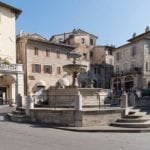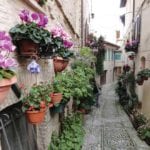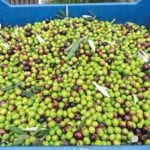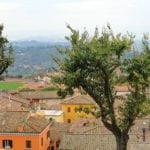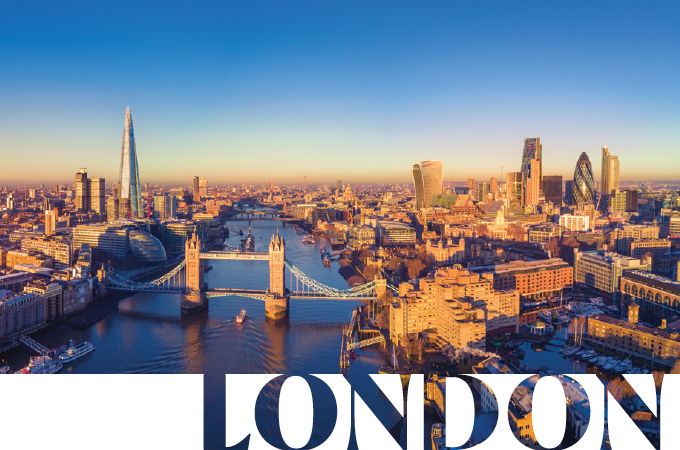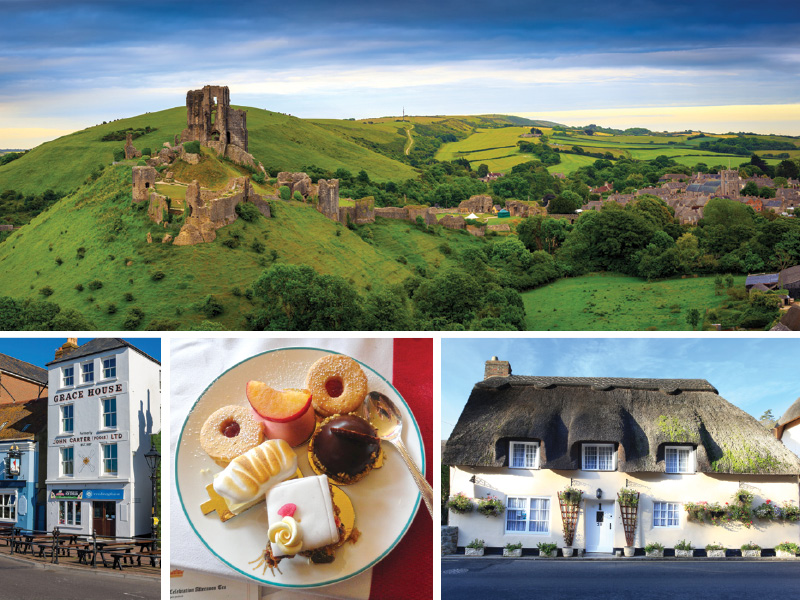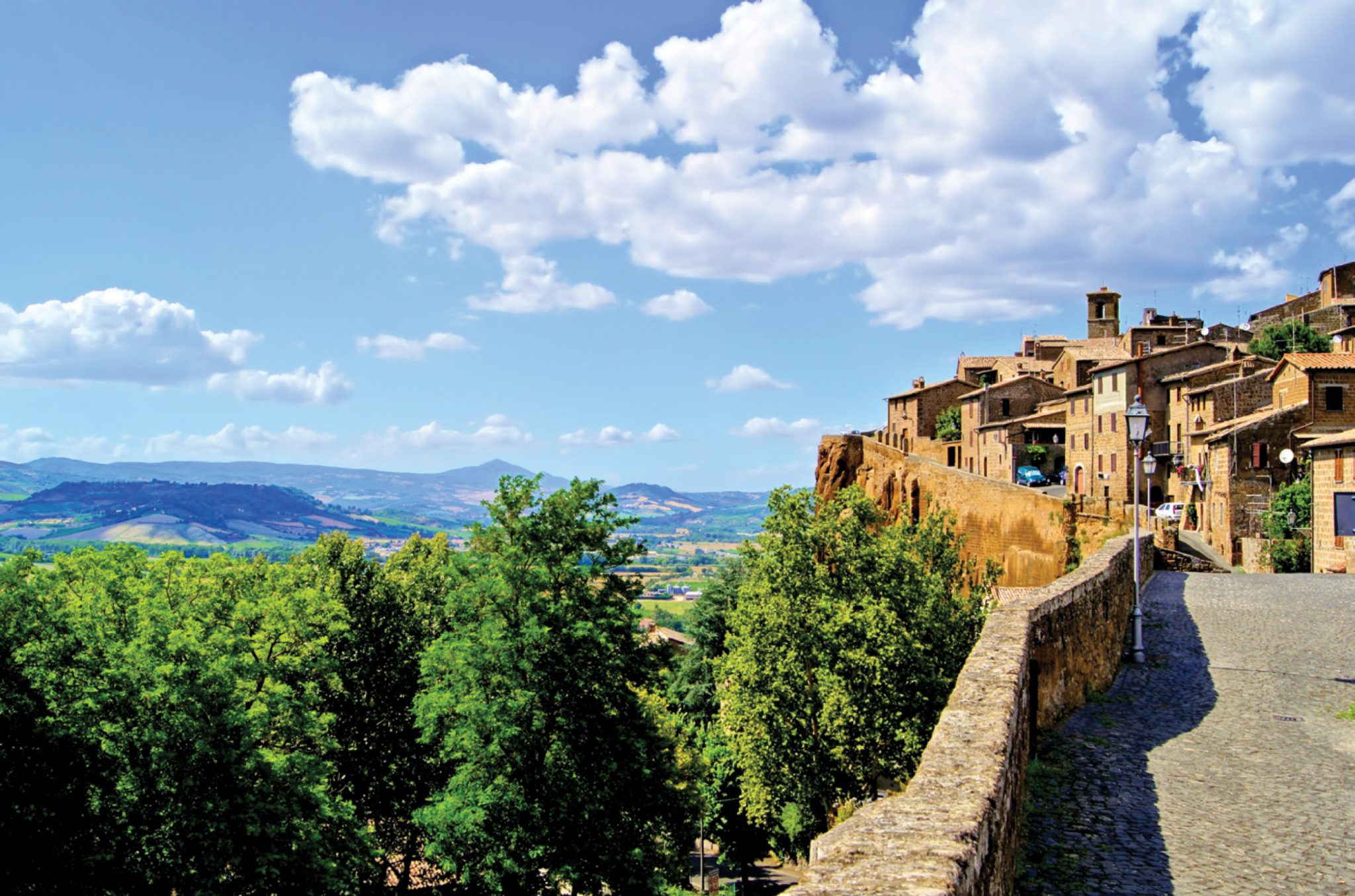Even in a country of saints and miracles, the town of Assisi is special. Imagine treading the same cobblestones as St. Francis, who was born in Assisi and died here. A sense of holiness permeates this Umbrian town, where pilgrims have come since the 13th century and continue to visit today, many of them moved to tears upon seeing the tombs of two saints, Francis and Clare.
Assisi is surrounded by 2½ miles of walls that date to 1314, but still are referred to as ‘the new wall.’ Of its four medieval gates, the first dates to Roman times and the second to 1260. Inside, the ancient walkways lead to the Basilica di San Francesco, built to commemorate the town’s most famous resident and Italy’s patron saint. The religious complex dominates the town with its Upper and Lower churches in contrasting Romanesque and Gothic styles, attributed to the Franciscan architect, Brother Elias.
The Upper Church is renowned for its frescoes, many by Giotto and his pupils. They tell the story of St. Francis’ life, from the renunciation of his father’s wealth to his commune with birds. The Lower Church contains his stone coffin, where his remains lie after being hidden outside the city for years to protect them from relic fever, the 13th-century craze of pillaging tombs for holy objects.
Francis was born into a prosperous merchant family in 1182 while his father was away trading in France. His mother named him Giovanni, but upon his return, his father insisted on the name Francis to honor France, the source of the family’s wealth. The legend holds that at age 24, while he was praying in the small, dilapidated church of San Damiano, the crucifix spoke to him, urging him to repair ‘the crumbling house of God.’
Transformed, Francis eschewed the affluence of his upbringing and embraced the poor and sick at a time when poverty and illness were believed to be signs of the devil. Later, when the plague spread throughout Umbria in 1348, the Franciscans turned their Assisi church into a hospital, and visitors today can still see the faded frescoes rubbed off the walls during an effort to disinfect the church.
Francis had more than 10,000 followers at the time of his death in 1226, including a young Umbrian named Clare. From a noble family, she was attracted to Francis’ ascetic teachings and became a follower so devout that he asked her to head a Franciscan order of women, giving it her name. Today, visitors can see the Poor Clares, who are devoted to the contemplative life, worshiping at several Assisi churches, including Santa Chiara (St. Clare) and Santa Maria Maggiore. Her tomb, also in Assisi, is in the Basilica di Santa Chiara, which houses the Oratorio del Crocifisso (Oratory of the Crucifix) containing the San Damiano cross.
With so much spiritual history here, Assisi is an odd mix of ancient and modern, even for a country used to reconciling old and new. Today, the town is filled with monks of all nationalities walking the lanes in their long brown robes and rope belts with the three knots that represent chastity, obedience and poverty. Souvenir shops up and down the lanes display the simple wooden ‘tau,’ called the St. Francis cross, an international symbol of Franciscan humility.
But religion isn’t the only thing this area exports. Assisi is set amid one of the most scenic landscapes in Italy. It’s built on high ground, and everywhere you look are red-tiled roofs and gently sloping hills dotted with grapevines and olive trees, some as old as 2,000 years. So this is a good place to visit a winery or get a bird’s eye view of olive oil production at a local frontoio, or olive mill. Brought here by the Etruscans, the cultivation of olives is a tricky business, as they must be harvested as soon as they ripen and start falling off the branches. Virtually overnight, families must rally with large nets to pluck the fruit and drop it into large nets spread on the ground. And they must be pressed within 24 hours of harvest, so families might find themselves at the frontoio in the middle of the night if all other time slots are taken.
In nearby Spello, affectionately called Assisi’s ‘little sister,’ we visited Frontoio Ragani, a small family mill. Once you see and smell the process, you gain a new appreciation for premium EVO—and an understanding of what ‘first cold press’ means on your olive oil bottle at home. The oil is ‘pressed’ through several layers of fiscoli, or filters, to extract luscious, lime-green oil, the scents of grass and greenery released in the process acting as a testament to its terroir.
In one simple gesture, a piece of bread illustrated for us why Italy is so beloved by visitors. At the frontoio, two women stood at a wood-fired brick oven toasting bread, sprinkling it with sea salt, and drizzling it with the newly pressed oil before offering it to us. What we tasted on that bread were generations of tradition, centuries-old olive groves, and maybe even the gentle piety of saints.
if you go!
eat
La Stalla, once a series of livestock stalls, is a rustic spot where you can enjoy specialties of the region, including torta al testa (split and stuffed flatbreads) and salsicce (sausages). La Fortezza just off the main piazza offers high-quality dishes like cannelloni all’Assisiana (veal ragu) and coniglio in salsa di mele (rabbit in a curry with apples) at reasonable prices.
stay
Assisi straddles Umbria and Tuscany, where the countryside is filled with villas that have been turned into guest housing. These are charming and offer a glimpse into ‘the real Italy,’ since they are usually run by the property owners. We stayed at Borgo San Luigi, a 400-yearold property at the end of a cypress-lined gravel drive. Our apartment was up a narrow staircase of well-worn stone steps and had a charming, wrought iron-enclosed veranda.
play
Spend time in the Basilica di San Francesco admiring the frescoes, statuary and other religious icons. Try to capture the gravity of the place, even though it may be filled with tourists. Don’t miss Basilica di Santa Chiara (St. Clare), a 1260 Gothic church where you will see the tomb of St. Clare and the Oratorio del Crocifisso.
shop
The little shops here offer most of the specialties Umbria and Tuscany are known for—linens, ceramics and foodstuffs—but the tau crucifix is the symbol of the city and the most meaningful memento from this city of saints.







